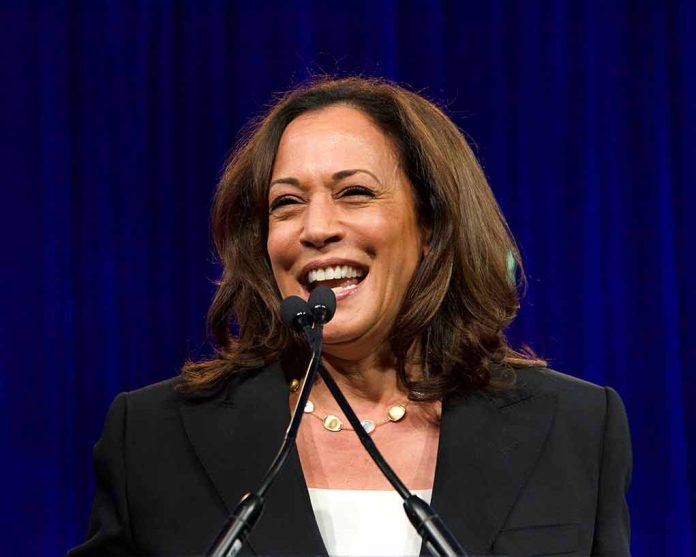
Our esteemed Vice President Kamala Harris has once again proven that good intentions don’t always translate into good results. Her latest venture into the world of eco-friendly school transportation has hit more potholes than a Detroit side street. Let’s dive into this green debacle and see why taxpayers might be seeing red.
The Grand Vision
Vice President Kamala Harris championed a $5 billion federal program aimed at transitioning school districts to electric buses over five years. The initiative was touted as a groundbreaking effort to improve environmental sustainability and reduce pollution by replacing diesel buses with electric ones.
“And today, 95 percent of our school buses are fueled with diesel fuel, which contributes to very serious conditions that are about health and about the ability to learn.”
However, the road to a greener future has proven to be riddled with obstacles, both financial and logistical.
The Harsh Reality
The program has faced significant challenges, with less than 7% of participating districts actually switching to electric vehicles. Many districts have withdrawn from the program due to opposition from school boards, high infrastructure upgrade costs, and technological issues.
NEW: One of Kamala Harris' responsibilities as VP has been overseeing the admin's $5B EV school bus push.
I took a look at the admin's data. Harris promised thousands of buses, but three years after the program was created, it's yielded just 60 buses. https://t.co/p0xhkUZ3eq
— Thomas Catenacci (@ThomasCatenacci) July 29, 2024
Economic Hurdles
Electric buses are significantly more expensive than diesel buses, making the project economically unfeasible without substantial grants. The high initial costs of these vehicles, coupled with the need for extensive infrastructure upgrades, have proven to be a major deterrent for cash-strapped school districts.
Energy experts warn of additional roadblocks, including lower vehicle range and the need for substantial electric grid upgrades. These factors further complicate the already challenging economic landscape of the initiative.
“It is about our investment in our children, in their health, and in their education.”
While the sentiment is noble, the practical application has fallen short. Critics argue that focusing on electric buses is misguided given the current challenges in the education system, such as teacher shortages and underfunded programs.
Criticism and Controversy
The program has been criticized for potential fraud and resource distribution inequities. Some argue that the funds could be better allocated to address more pressing issues in education or infrastructure.
Adding to the Vice President’s woes, six House Democrats joined Republicans in passing a resolution condemning Harris for her failure as “border czar.” This criticism, coupled with the struggles of the electric bus program, has cast a shadow over her effectiveness in addressing key issues.
The Road Ahead
Despite the program’s issues, the Biden-Harris administration has announced plans for further funding. This decision has raised eyebrows among fiscal conservatives and education advocates alike, who question the wisdom of doubling down on a struggling initiative.
As the debate continues, one thing is clear: the path to greener school transportation is far more complex and costly than initially anticipated. While the goal of reducing emissions and improving children’s health is commendable, the economic realities of such a massive transition cannot be ignored. As taxpayers and parents, we must ask ourselves: Is this the best use of our limited educational resources, or are we simply spinning our wheels in a well-intentioned but ultimately impractical green dream?
Sources
More from Around The Web
‘YOU FAILED’: LAWMAKER RIPS APART KAMALA’S DISMAL RECORD WITH BIDEN
‘WORSE CANDIDATE THAN HIM’: TRUMP CALLS OUT HARRIS FOR FLIP-FLOPPING ON POLICIES
‘WHO DOESN’T LOVE A YELLOW SCHOOL BUS?’: KAMALA HARRIS TOUTS INVESTMENTS IN ELECTRIC SCHOOL BUSES
VICTIM OF MIGRANT CRIME BECOMES TRUMP SUPPORTER













